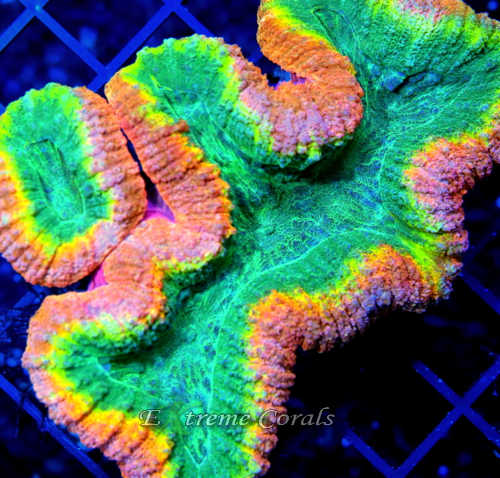Extreme Corals News and Updates
How to care for Lobophyllia in a Reef Tank
Find out how to properly care for your new Lobophyllia with this "how-to" guide on the requirements for healthy Lobophyllia from the #1 place to buy corals online!
Read along to find out the Lighting, Water Flow, Feeding, Placement & more when it comes to the care of your new Lobophyllia
by scott Shiles • February 27, 2023
Lobophyllia, commonly known as Lobos, are a popular type of LPS (large polyp stony) coral that can add a beautiful and colorful touch to your reef tank. They are relatively easy to care for, but like all corals, they require specific conditions to thrive. In this blog, we'll cover everything you need to know to keep your Lobophyllia healthy and happy in your reef tank.
Water Parameters:
Maintaining proper water parameters is essential for the health of your Lobophyllia coral. The ideal temperature for Lobos is between 75-80°F (24-27°C), and the pH should be kept between 8.1-8.4. It's also important to keep your salinity levels consistent at 1.025 specific gravity.
The calcium and alkalinity levels should be kept at around 400 ppm and 8-12 dKH, respectively. Regular water testing is crucial to ensure these parameters stay within the correct range. If any of these levels are out of balance, it can stress your coral and cause it to become unhealthy.
Lighting:
Lobophyllia requires moderate lighting. Too much light can cause the coral to bleach or even die, while too little can inhibit its growth. Ideally, your Lobos should receive around 6-8 hours of moderate lighting per day.
LED lighting is an excellent option for Lobophyllia, as it allows you to adjust the intensity and color spectrum of the light. It's important to acclimate your Lobos to the lighting gradually to prevent any shock or stress.
Water Flow:
Lobophyllia requires moderate water flow in your reef tank. Too little flow can result in debris settling on the coral, which can lead to infections and other health issues. Too much flow, on the other hand, can cause the coral to retract and become stressed.
It's best to place your Lobos in an area of your tank that receives moderate water flow. Regular cleaning of your tank and powerheads is also crucial to ensure proper water flow and prevent any debris buildup.
Feeding:
Lobophyllia is a photosynthetic coral, which means it obtains a significant portion of its nutrients through photosynthesis. However, it's also important to feed your Lobos occasionally with small pieces of meaty foods, such as brine shrimp, mysis shrimp, or small pieces of fish. You can target feed your coral using a pipette or turkey baster to ensure it receives enough food.
It's important not to overfeed your Lobos, as excess food can cause water quality issues and promote the growth of harmful algae and bacteria.
Maintenance:
Regular maintenance is essential to keep your Lobophyllia healthy and thriving. Regular water changes, testing, and cleaning your tank and equipment are all crucial to ensure proper water quality and flow. It's also important to monitor your coral for any signs of stress, disease, or infection.
If you notice any issues with your Lobos, it's essential to take action quickly to prevent the problem from spreading to other corals in your reef tank. Quarantine new corals before adding them to your main tank to prevent the introduction of any pathogens or diseases.
In conclusion, Lobophyllia is a beautiful and relatively easy-to-care-for coral that can be a fantastic addition to your reef tank. By maintaining proper water parameters, lighting, water flow, feeding, and regular maintenance, you can ensure your Lobos stay healthy and happy in your reef tank for years to come.

